
The cooling board table. This piece of furniture may be one of the strangest objects that I have ever encountered, and definitely the strangest that I own. Ever since learning what its true purpose might be, I have rethought how it should be used with other pieces of furniture and objects in our home (Portraits of a Collection).
Purchased almost two decades ago at an antique store in Lexington, Kentucky—a time when one could still encounter rare finds at a reasonable price—this table was described as a military field bed, possibly used by physicians for triage in World War I.
Military field bed
Constructed of solid oak and made to fold together, one side of the frame has a handle, thus suggesting easy transport. I had seen folding field hospital beds and lightweight gurneys for battlefield use, however, in my memory they were lightweight objects. Mine seemed built to last, and, may I say, was a rather stylish object with beautiful hinge details, elegant execution, and hand woven cane latticework.
The description from the antique store seemed plausible, and the elegance and beauty of the making was enough for me to make the purchase. Over the years, it has served multiple purposes in our home, originally supporting a small television that unfortunately damaged the wicker webbing—natural wear and tear that was repaired near to its original look.
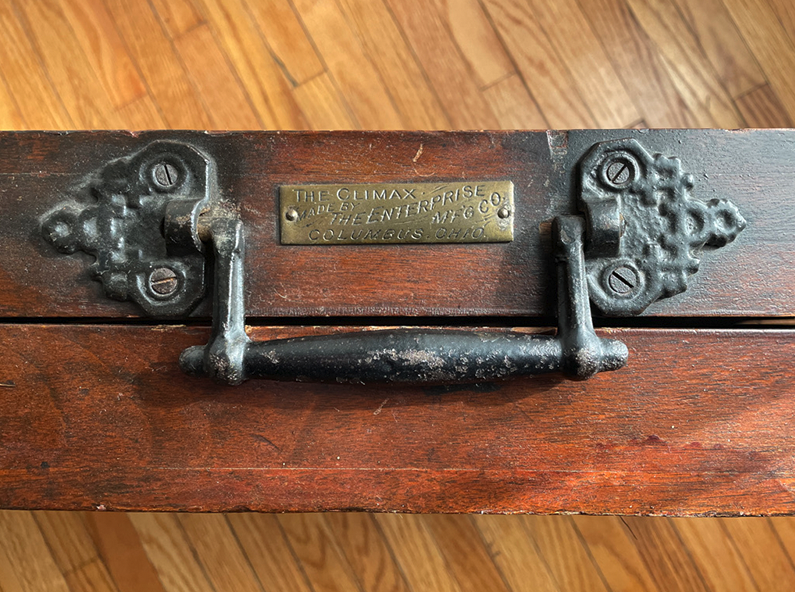
Recently, when I started my research for this blog, I had difficulties finding comparable examples that could expand on the object’s history, fabrication, and use. Fortunately, as with many antique pieces, either the craftsman or company will have left a mark of their name and/or place of fabrication. Above the handle on my piece was a little brass plaque that read in cursive lettering (Image 1, above):
THE CLIMAX
MADE BY THE ENTERPRISE MFG CO.
COLUMBUS, OH
Surfing the web, I located a similar piece that was in poor condition but had all of the attributes of my bed. To my surprise the object was described not as a bed, but as a cooling table, which did not make sense based on what the antique dealer had told me years ago. With further research, I learned that a cooling table is a “wooden platform on which a dead body would be temporarily stored and prepared for a funeral.” Needless to say, my surprise surpassed anything I had ever experienced with an antique, and my curiosity about the nature of this object grew exponentially.
Cooling table

Let’s start from the beginning, or at least a little more than a century ago. Before modern hospitals, death typically happened in the boundaries of the home. Also, to respect Western societal rituals and values, the dead body would be exhibited for a final viewing while the coffin was prepared by there local carpenter.
The table in my possession hints at serving the primary purpose where “The body was placed on the table with the ice under it, and quilts, canvas or any available covering material was draped over the cooling board and body, thereby cooling, refrigerating and preserving the body until the funeral.”
This was particularly true if funeral arrangements were incomplete and there was a need to preserve the body for several days before internment. The undertaker—the forerunner of today’s funeral home directors—needed a place within the deceased’s home (parlor), and a place for the body to rest. Thus, the invention of the cooling table, or cooling board.

The parlor
As an interesting side note, I discovered that the word parlor [receiving room initially reserved for guests] was abandoned after the influenza outbreak following World War I. During the epidemic, bodies could not be buried quickly enough; thus, the parlor became a place where the dead were kept for a period of time and were nicknamed “death rooms.”

As years passed, viewings were no longer were held within the home—in the parlor—thus the name of the room changed to ‘living room’ as a means of disassociating the family-oriented space from its former sad, grieving and morbid function. Living rooms became a place to socialize, relax and entertain.
As the house amplified its role in the 1950s, family rooms, dens, and TV rooms entered the programmatic lexicon of the home’s functions. The casual aspects of family rooms left the traditional formal and decorative living room as a space often with strict rules of entertainment, at a minimum the space served to make an impression about the owner’s good taste.
Perhaps a plausible meaning for the more contemporary living room’s function was a result of the shift from a receiving room reserved for guests and events such as those surrounding death.
Mortician

As early as the 1800s, morticians would do a house call and bring with them a portable cooling table. As we can all suspect, there was a need to slow the decomposition process, thus the required open latticework, or drilled holes in a wooden plank, rather than a solid wooden surface. Therefore, the dual purpose of the wicker caning. By placing large ice blocks beneath the table, the body would chill as the cool vapor from the ice permeated the open caning. If no embalming procedure took place, the table allowed various bodily fluids to drain through the open cane into a receptacle.
Other features of interest with the table are that one side of the two flaps could be propped up or down to keep the body in a more elevated position. For ease of transport, the legs fold under the table, allowing it to fold in half and be carried almost like a briefcase (Images 4 and 5, above).


Conclusion
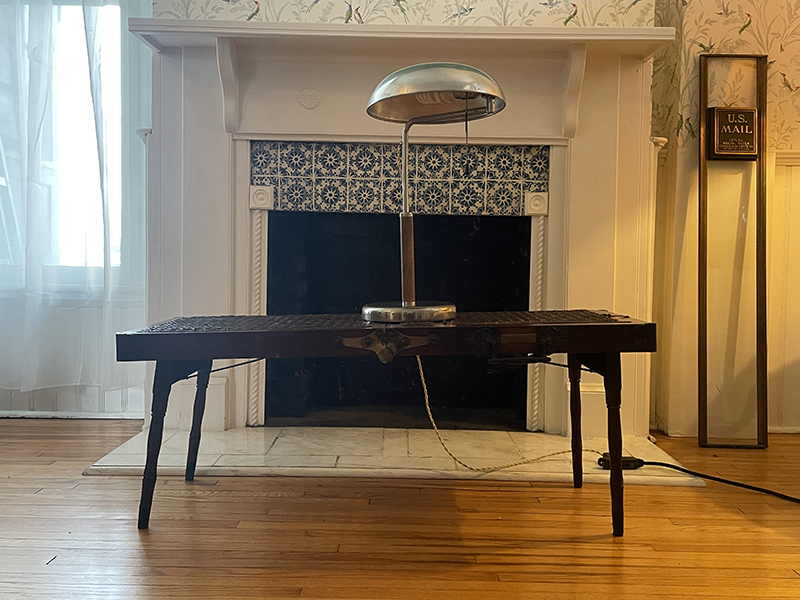
In spite of the compelling descriptions that emerged from my research, several factors undermine the findings of the cooling board table. First, because I couldn’t locate another specimen of this cooling table beyond one mention at an auction house. Second, that most cooling tables did not feature the elegant craftsmanship of mine. Third, its overall dimensions do not fit an average human—although I recognize that people were shorter a century ago. I did wonder if this particular table was meant to accommodate smaller frames or those of children, thus the child-sized table which were produced as well. (Image 7, above)
As a final note, when set in the foyer topped with an Art Deco lamp, I was reminded that the surface of the table/bed is slanted from the head to the feet! So perhaps it IS a cooling table.
This bed (as I still wish to call it) has always been a beautiful addition to our collection. I welcome any expert guidance about the true nature of the piece of Victorian material culture, send me your thoughts so that I can determine its proper name.
General Information
Creator: The Climax, Enterprise MFG Co. Columbus, Ohio
Date of manufacture: vintage 19th century
Materials: Oak, brass, metal and cane
Dimensions: Open L: 41”75; W: 15”.0; H1 15”.75 H2 17”.25, and D: 2” 2/8 and closed L: 21” W:15”:0; D: 4”3/8.
Origins: United States of America
Additional curiosities named Portraits of a collection
Images
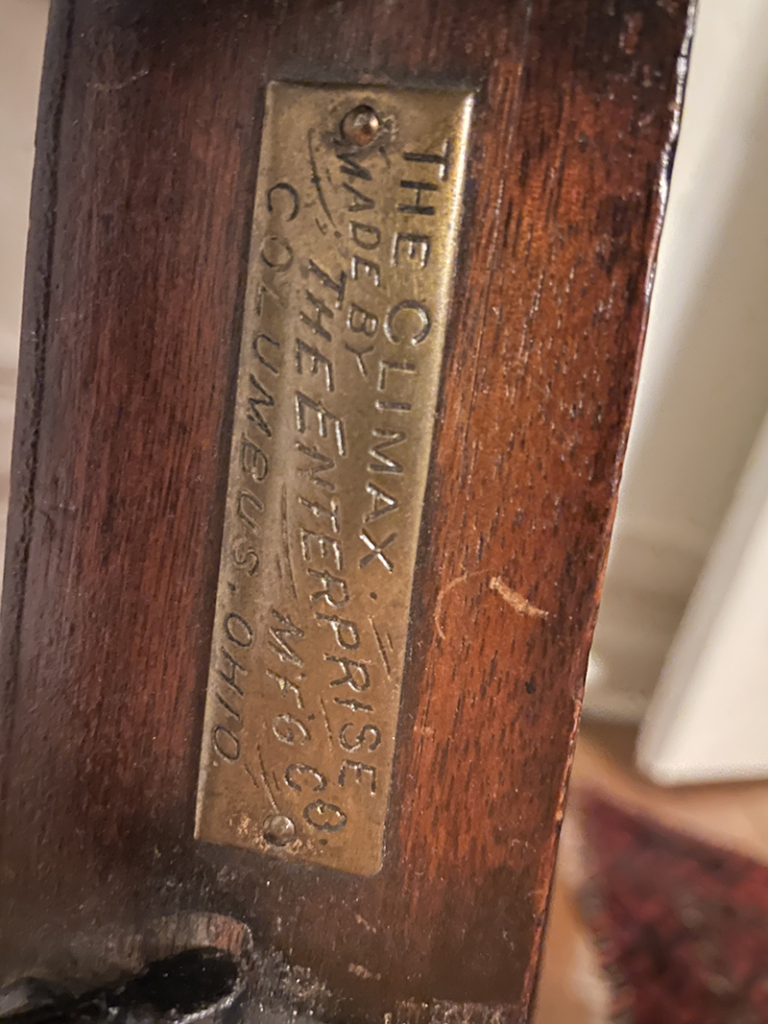
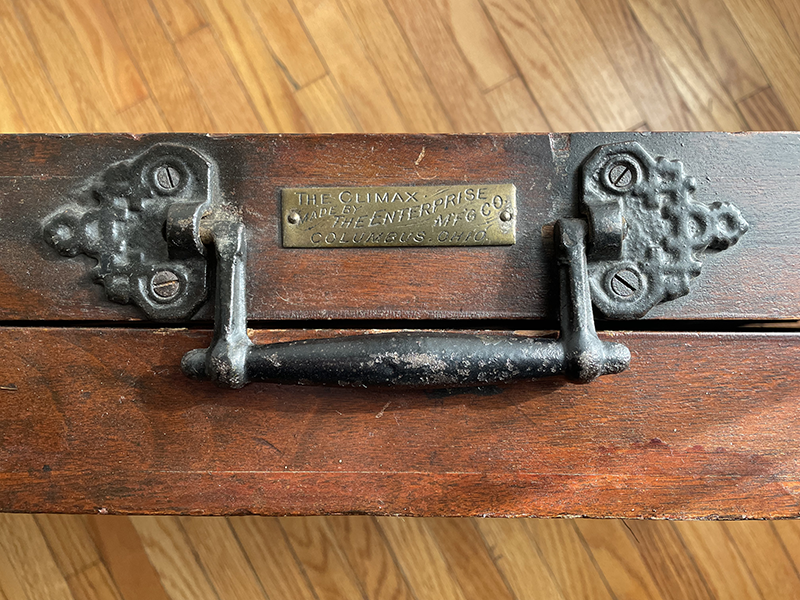
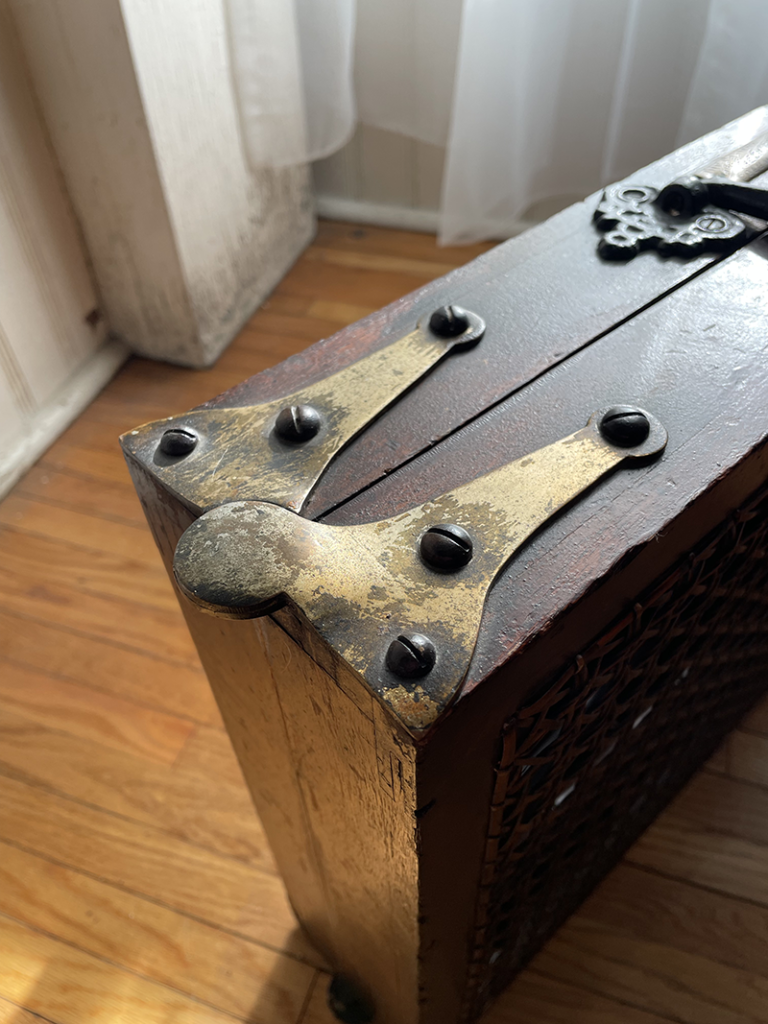
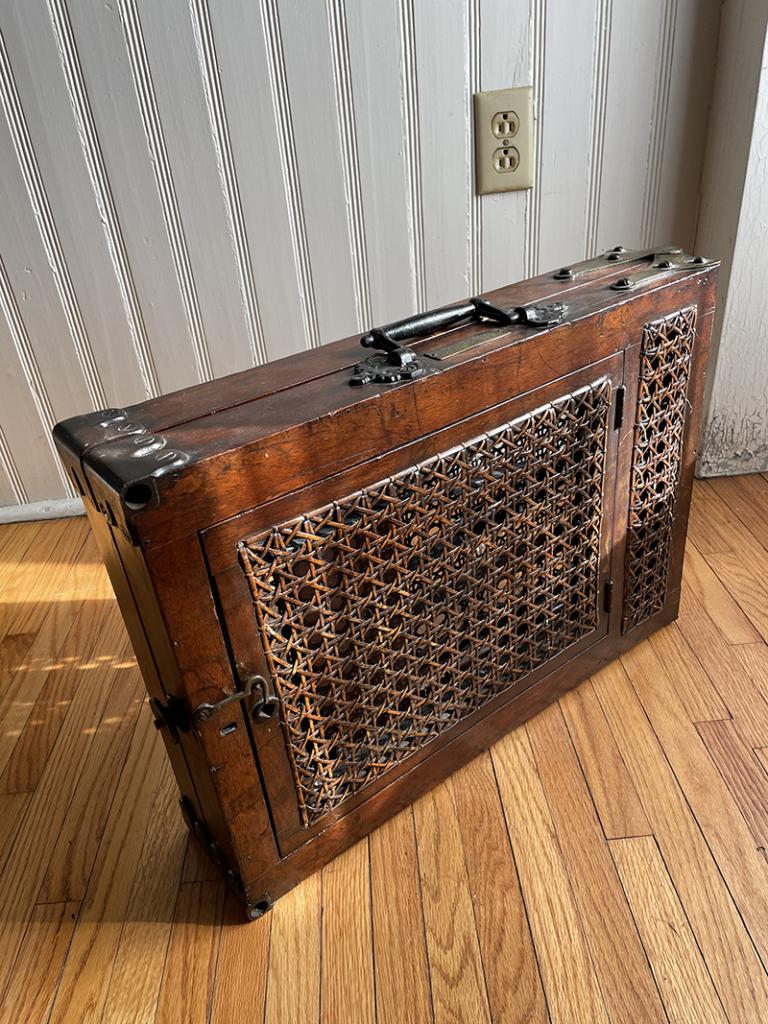
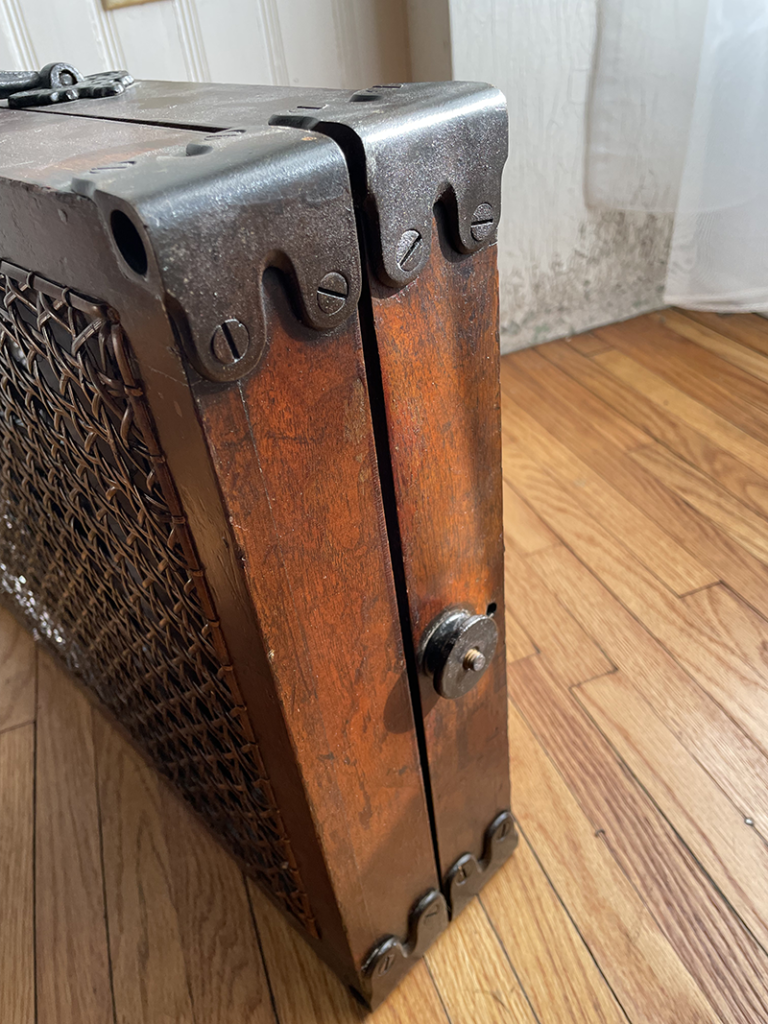
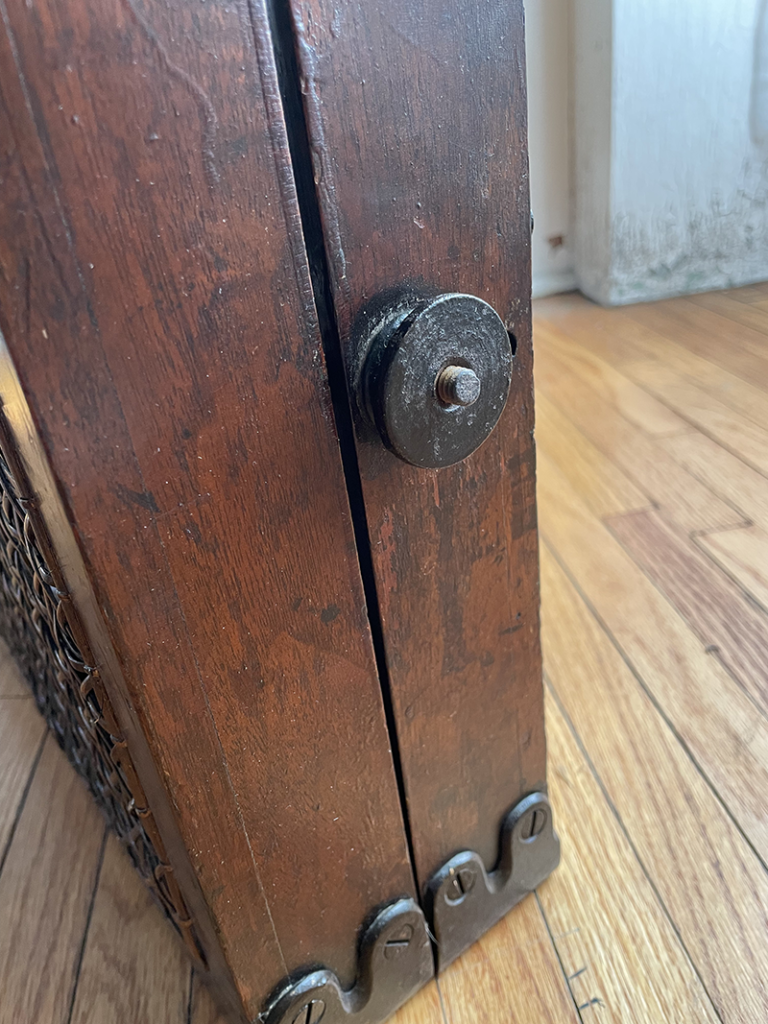
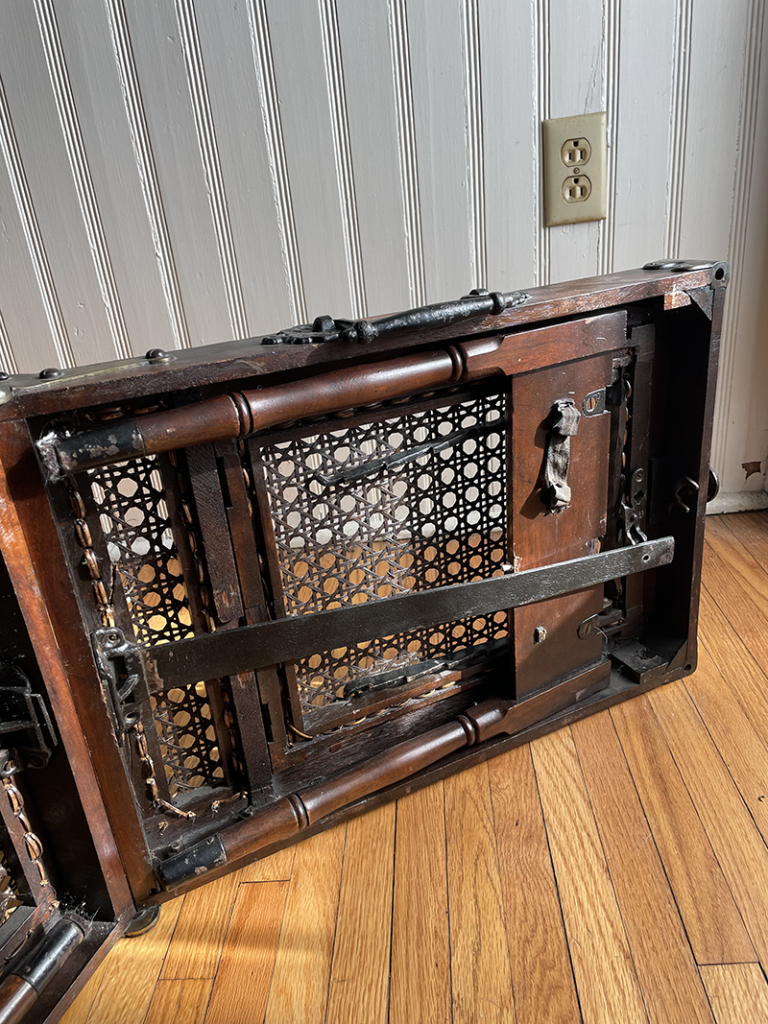

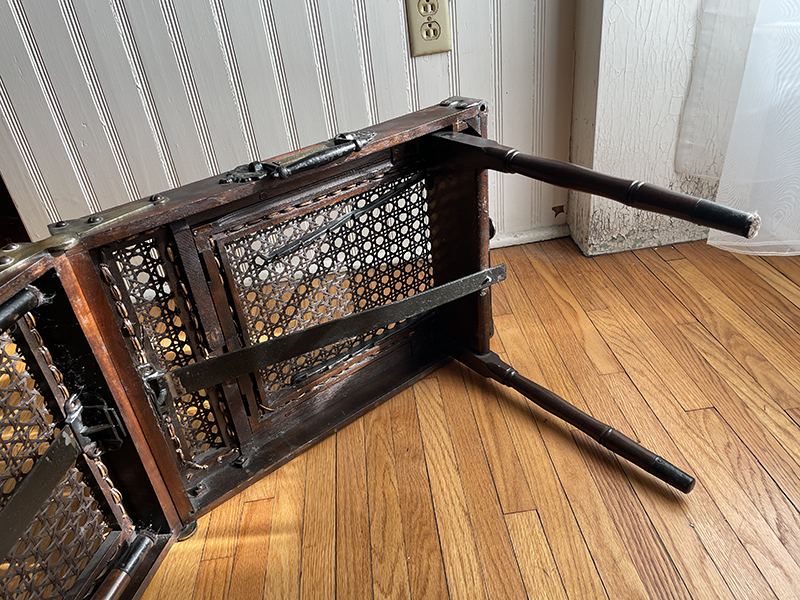
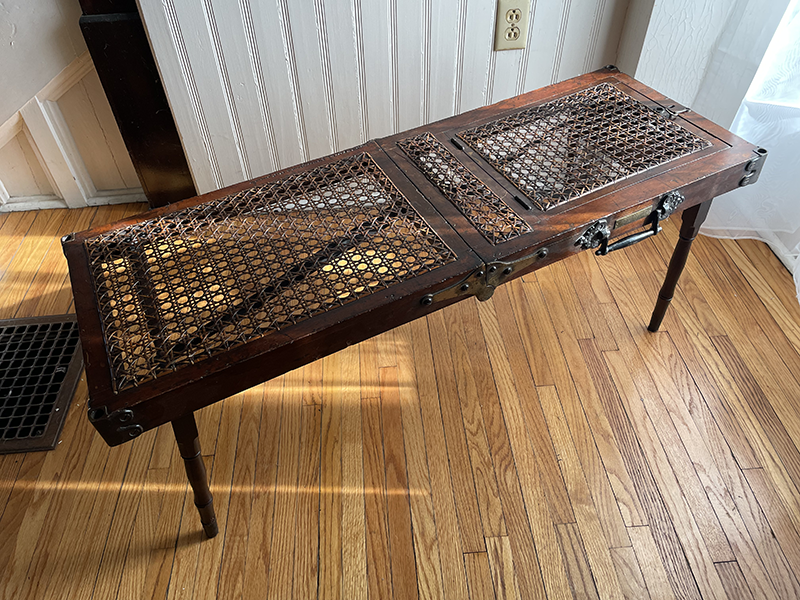

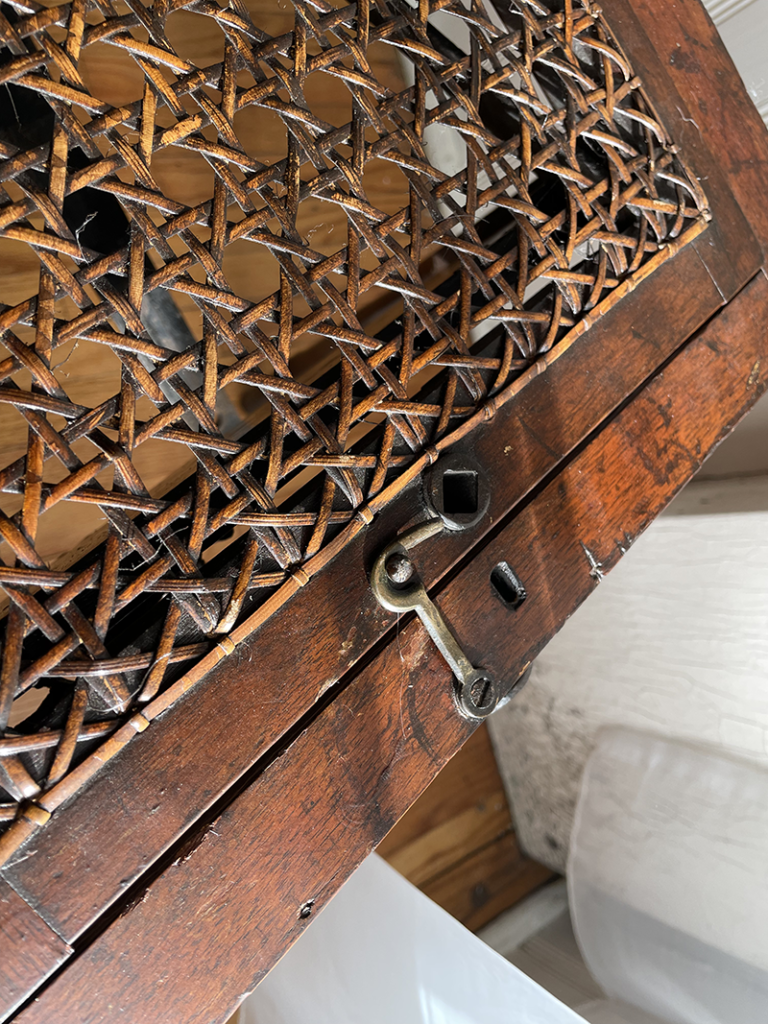
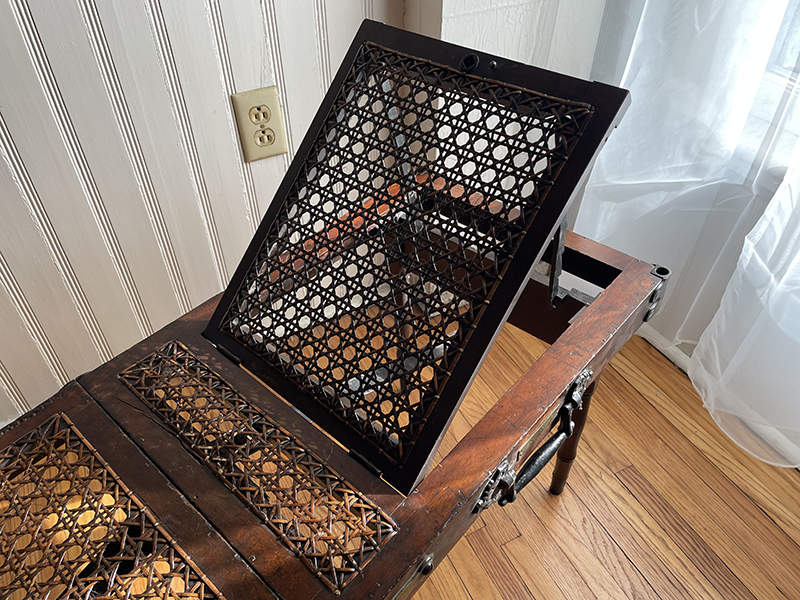
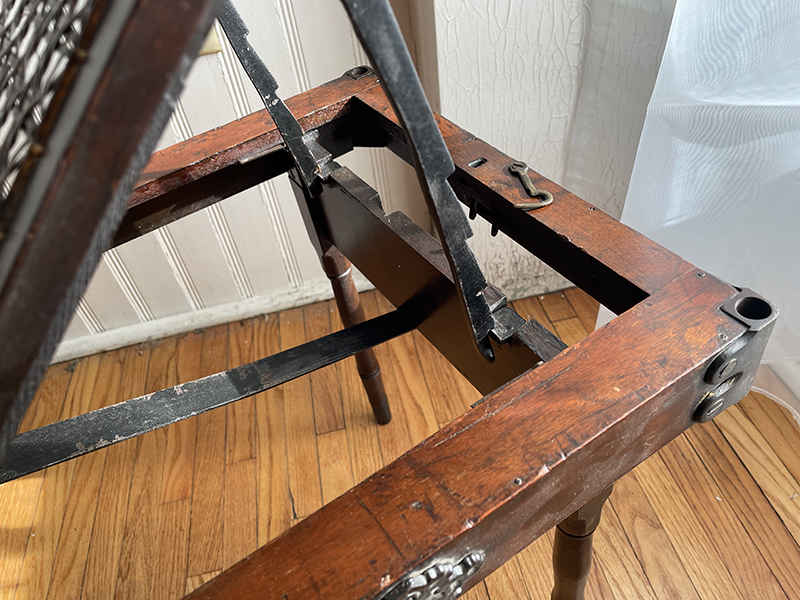

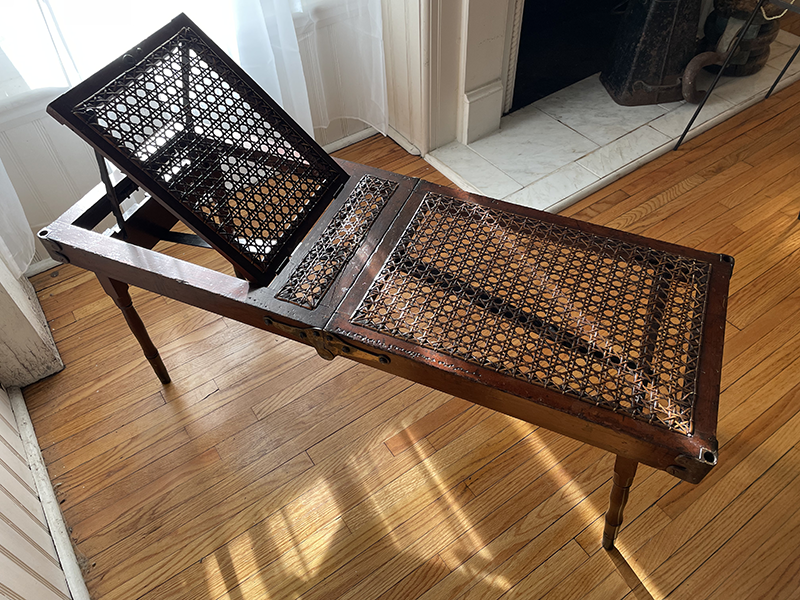
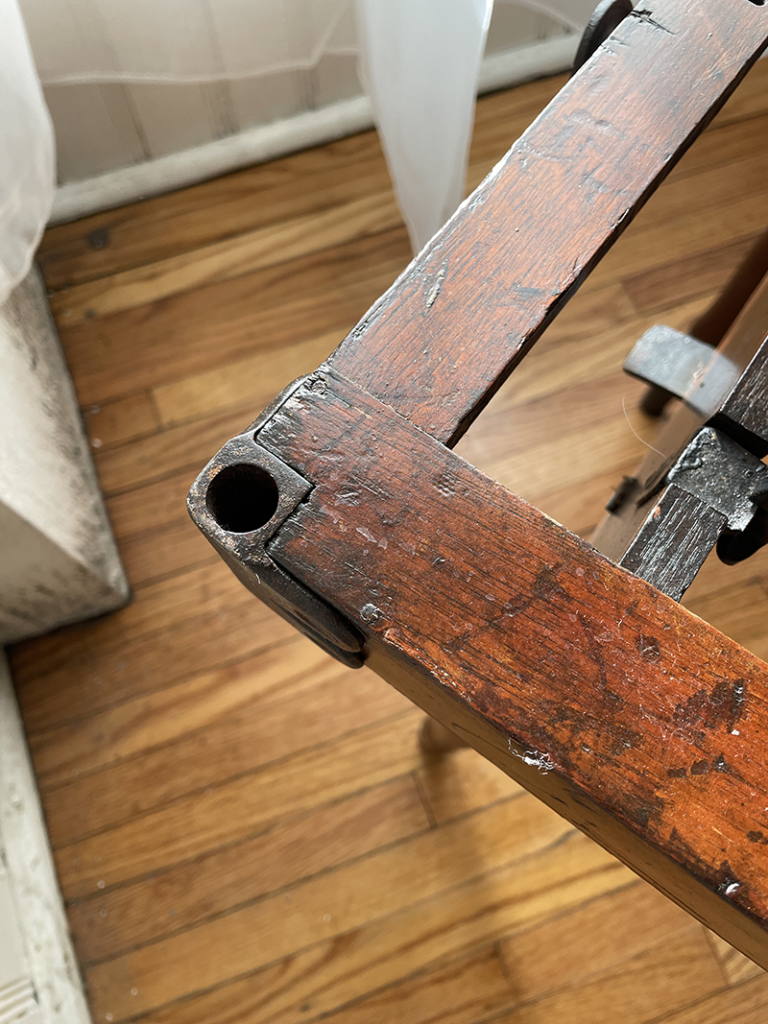
I’ve got one too! Mine is the adult version, L 73″3/4; W 19″ 5/8; H1 16 5/8; H2 24′. Mine is the same manufacturer (same hinges and corners, very similar handle) as yours but is missing the brass plaque with manufacturing information and the closure knob. The knob has been replaced by a hook suggesting that it was used for a while. I believe that originally the piece would have come with some hardware to fit into the holes in the corners to raise the quilts up over the body to allow air to circulate.
Dear Charles,
WOW, send a picture so that I can see the similarities. How do you use yours? We set ours in the front parlor where is was supposedly used surrounded by two vintage Aalto Chairs.
Amities, Henri